
Gustav Klingert and his Silverware Factory
Gustav Klingert was a Russian jeweler of German origin and the owner of a silver and gold manufacturing enterprise that operated in Moscow at the turn of the 19th and 20th centuries. Gustav Klingert's factory existed for just over fifty years and left a notable mark in the history of silver craftsmanship. Even a small number of surviving items demonstrate the high artistic level and excellent quality of the work of its masters.
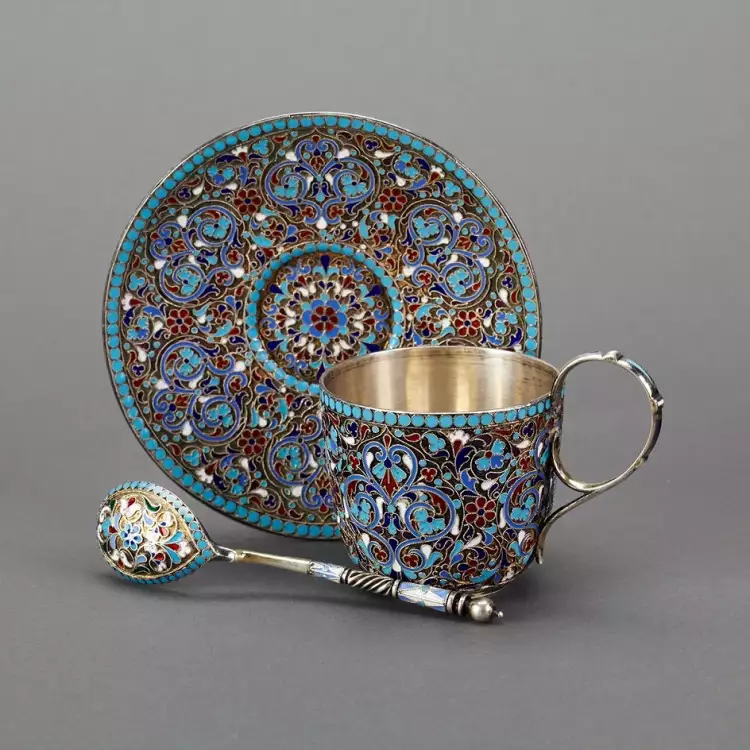 Gustav Klingert's Silver. Tea Set
Gustav Klingert's Silver. Tea Set
History of Gustav Klingert's Factory
Gustav Klingert came from a family of hereditary jewelers who had moved to Moscow from Germany in the early 19th century. In his youth, he worked in his father's workshop and established his own business in 1865 (according to another version, in 1866), taking advantage of the high demand for silver that was prevalent in Russia at the time. Initially, the production facilities were located in the family house on Malaya Syromyatnicheskaya Street, and in the 1910s, the company moved to Elokhovskaya Square.
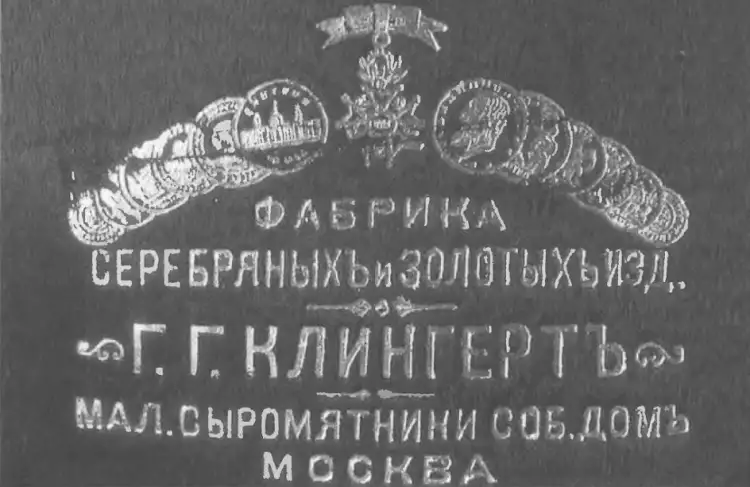 Gustav Klingert's Silver. Factory Address Plate
Gustav Klingert's Silver. Factory Address Plate
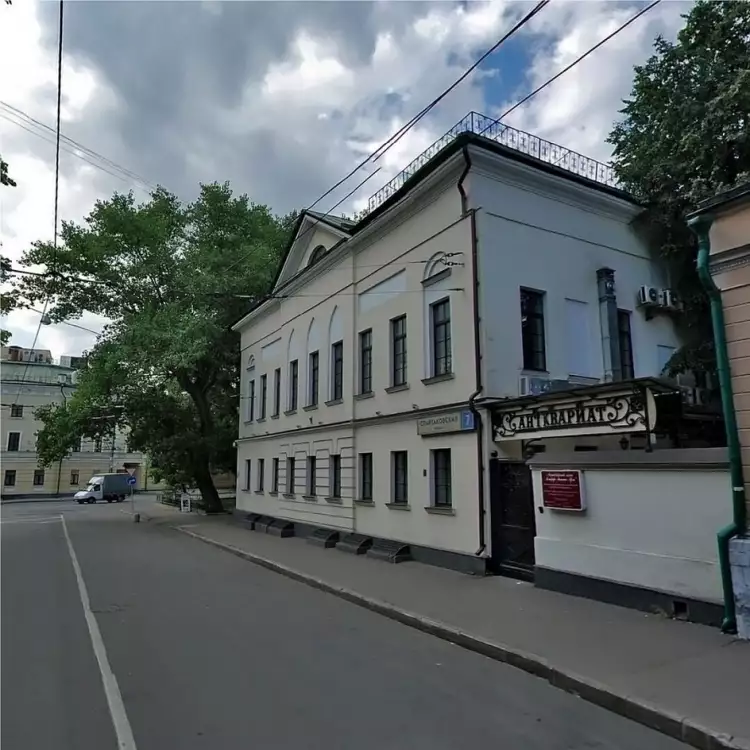 Gustav Klingert's Silver. Building of the Production Facility after 1912
Gustav Klingert's Silver. Building of the Production Facility after 1912
Gustav Klingert focused on the fashionable neo-Russian style, which gained popularity after the costumed court balls dedicated to Russian history. It is impossible to determine precisely which specific pieces the jeweler personally worked on. However, it is clear that thanks to the excellent artistic taste of the entrepreneur, Klingert's silverware is now well recognized among the creations of the Moscow school masters.
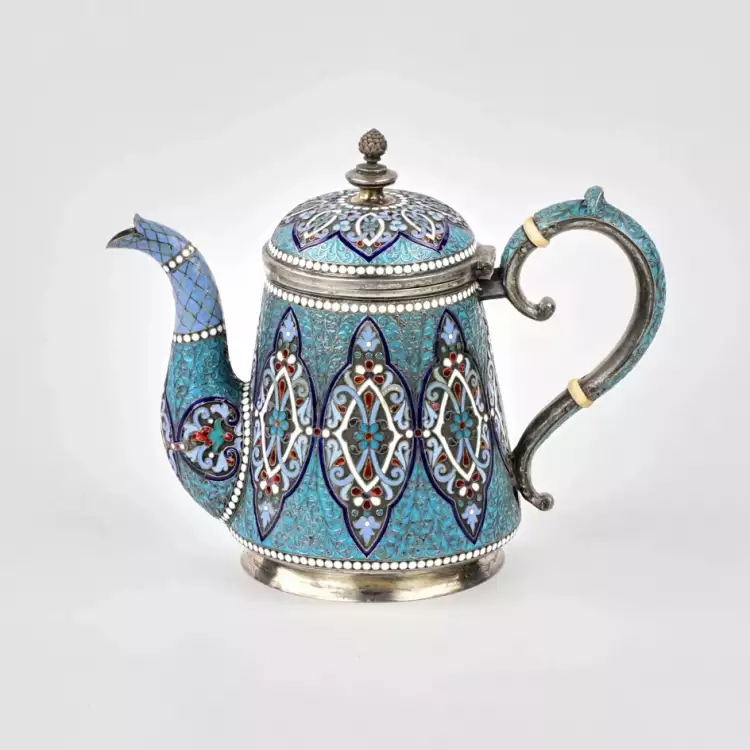 Gustav Klingert's Silver. Silver Teapot with Enamel
Gustav Klingert's Silver. Silver Teapot with Enamel
There is little information available about the activities of the factory itself. The archives contain conflicting information about the year of its founding and the scale of production. Art historians lean towards the version that the enterprise produced significant volumes of goods, although it was not considered large-scale. In 1897, the company's output amounted to 45,000 rubles with a staff of 55 people. For comparison, during the same period, Pavel Ovchinnikov employed 300 craftsmen, and the company's turnover reached 250,000 rubles.
From the late 1880s, the factory regularly participated in international exhibitions. In 1889, Klingert's silverware won a bronze medal in Paris, and in 1893, it took third place at the World's Columbian Exposition in Chicago. The company received some orders from the Moscow branch of the firm Karl Fabergé. By 1909, the factory's main focus was on producing tableware sets, and its workshops processed over 1.3 tons of silver annually.
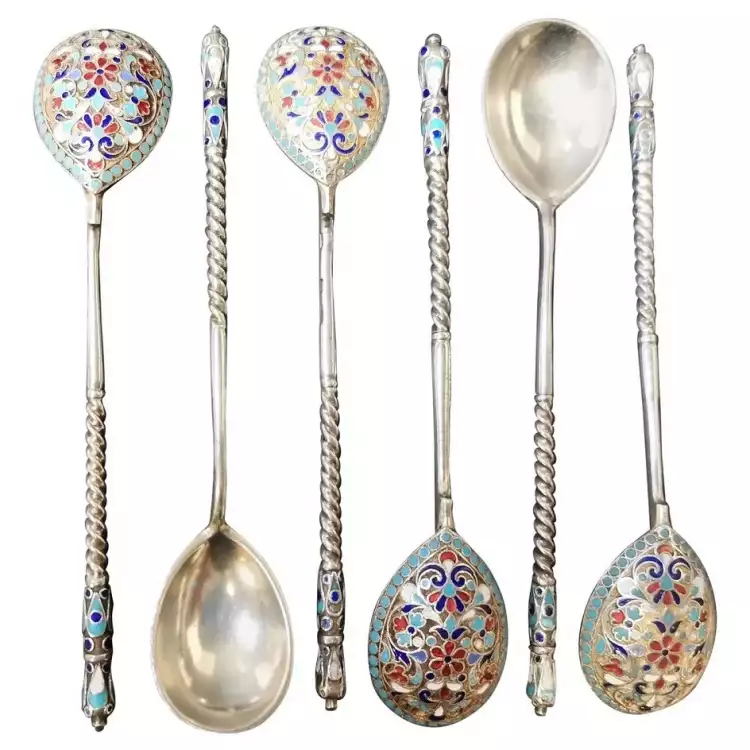 Gustav Klingert's Silver. Set of Six Imperial Silver Spoons with Cloisonné Enamel, circa 1900
Gustav Klingert's Silver. Set of Six Imperial Silver Spoons with Cloisonné Enamel, circa 1900
The last mentions of Gustav Klingert in archival documents are related to his membership in the Moscow Numismatic Society, where he was a member until 1915. By that time, the entrepreneur was already 76 years old, and his eldest son, Karl-Gustav-Otto, managed the business. Like many others, the company ceased to exist due to the revolutionary events. During the Soviet era, Klingert Jr. worked at the Moscow Jewelry Association.
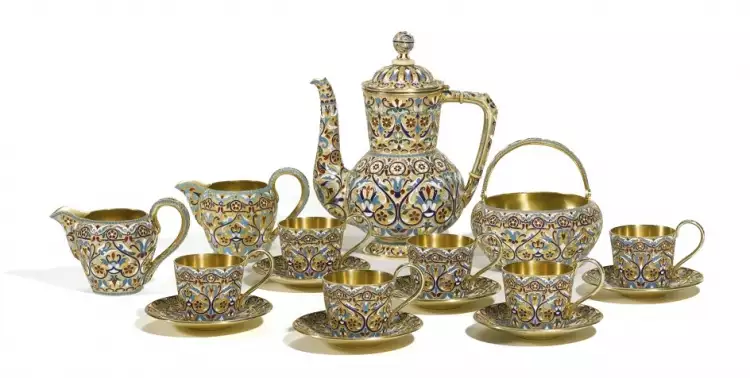 Gustav Klingert's Silver. Coffee Service with Gilding and Cloisonné Enamel, early 20th century
Gustav Klingert's Silver. Coffee Service with Gilding and Cloisonné Enamel, early 20th century
Gustav Klingert's Silverware: Styles and Techniques
In Klingert's workshops, they produced many affordable silver items with minimal decor: cigarette cases, snuffboxes, coasters, and cutlery. They applied engraving and niello to the surfaces, and the handles of knives, forks, and spoons were adorned with floral ornamentation. There were also pieces created using a combination technique — silver-framed crystal vases and glass decanters, and ladies' purses with glass cabochons. However, it was the enameled creations that brought true fame to the factory.
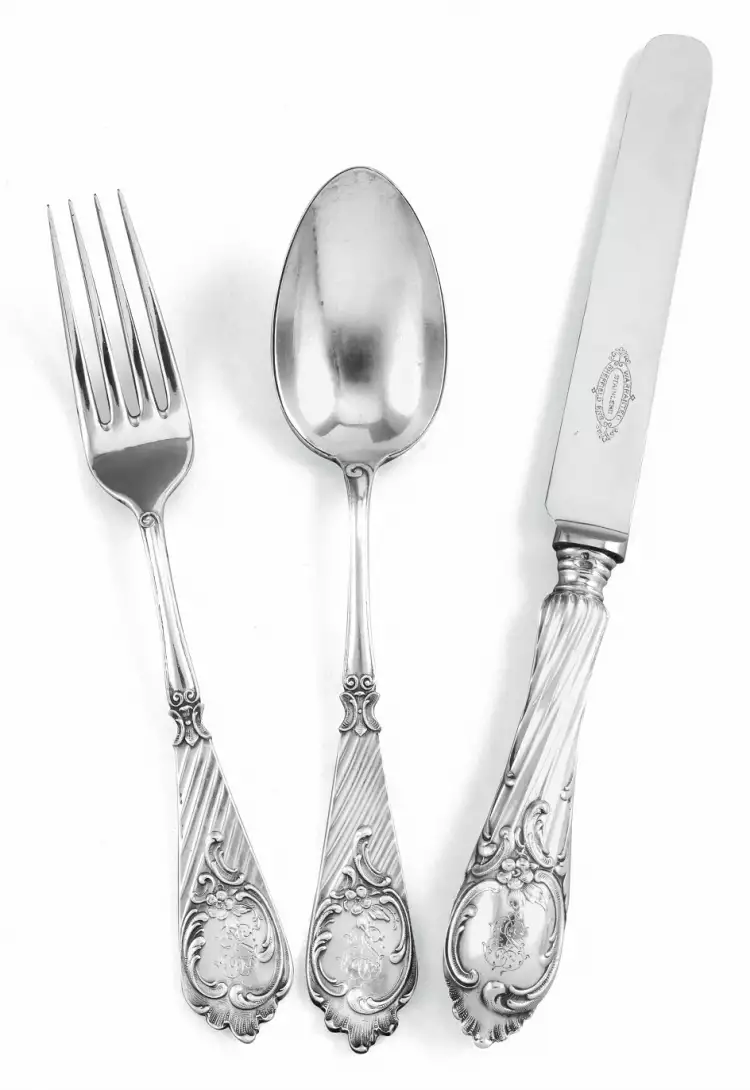 Gustav Klingert's Silver. Items from the Set of Tableware, 1896-1917
Gustav Klingert's Silver. Items from the Set of Tableware, 1896-1917
The enamelers crafted tableware in the characteristic forms of pre-Petrine Russia: shot glasses, drinking vessels, ladles, and bottles. Unusual geometric designs helped transform stylized objects into functional items that could be used daily at the dining table. The brightness and polychromy inherent in ancient Russian art were reflected in the ornaments. During that time, jewelers had a palette of almost one and a half hundred enamel shades, allowing artists to unleash their imagination in color selection.
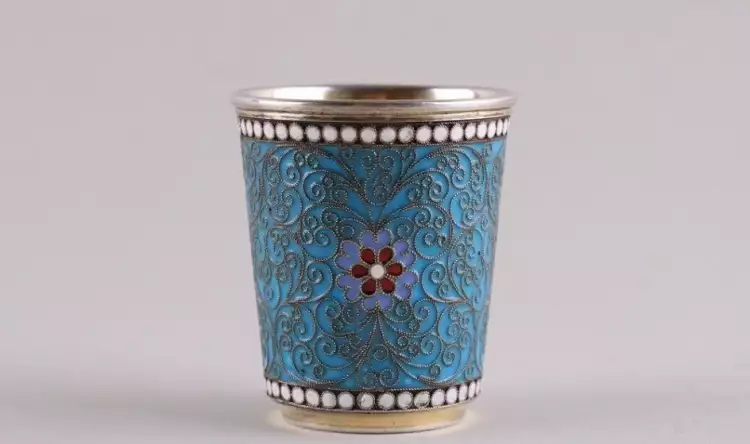 Gustav Klingert's Silver. Stack with Enamel Overlay, 1891
Gustav Klingert's Silver. Stack with Enamel Overlay, 1891
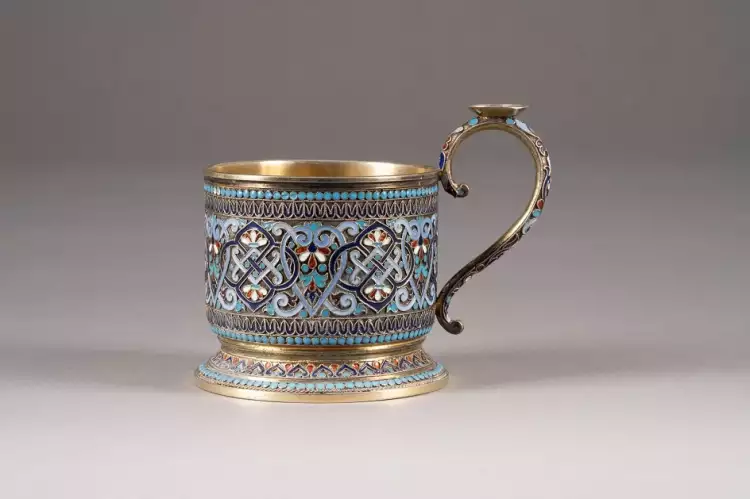 Gustav Klingert's Silver. Silver Goblet with Gilding and Cloisonné Enamel, 1891
Gustav Klingert's Silver. Silver Goblet with Gilding and Cloisonné Enamel, 1891
Distinctive features of Gustav Klingert's enameled silverware:
- Simple forms without elaborate elements.
- Decorations consisting of combinations of no more than three colors, often shades of blue, white, and red.
- Patterns divided into separate zones when contrasting tones were chosen.
- Fine ornamentation, with large details being rare and usually emphasized with color.
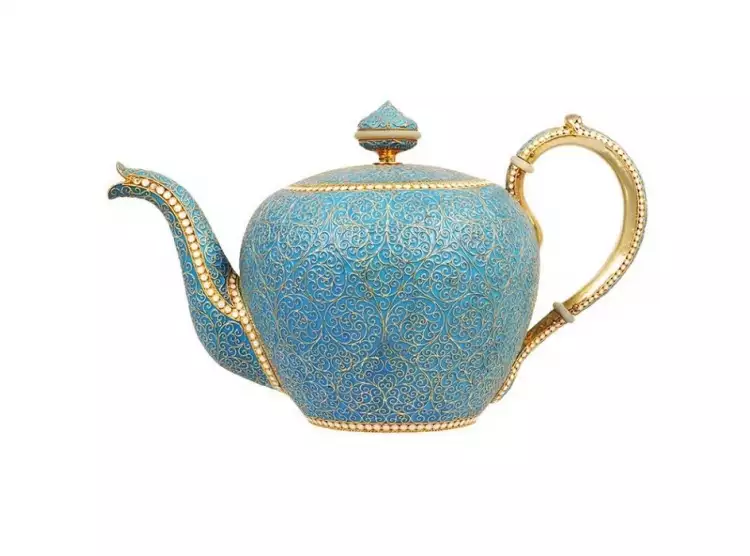 Gustav Klingert's Silver. Teapot
Gustav Klingert's Silver. Teapot
Gustav Klingert's breakthrough came with the use of azure and turquoise enamel shades, which were present in the decoration of entire sets of tableware. These works were strongly influenced by the Art Nouveau style. Delicate engraved patterns made of fine silver wire were filled with monochromatic enamel, covering the entire surface of tea and coffee sets, wine decanters, salt cellars, and cigarette cases. The ornamentation avoided monotony through the use of vibrant tones, gilding, and decorative borders imitating pearls.
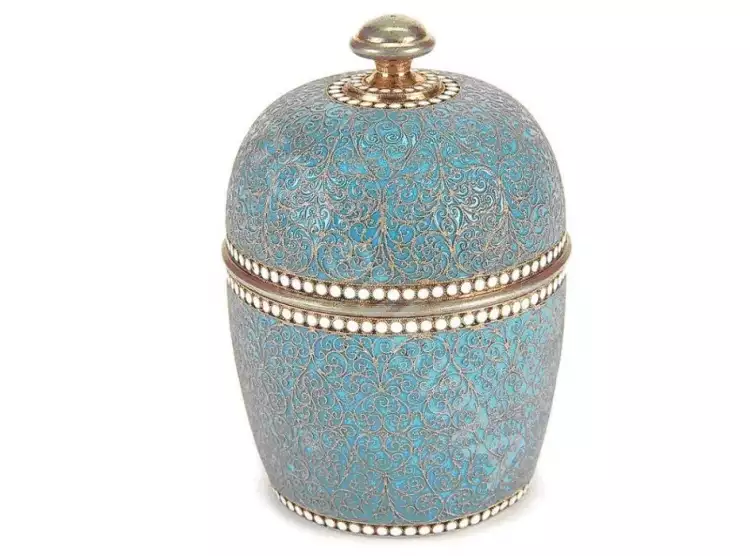 Gustav Klingert's Silver. Honey Jar
Gustav Klingert's Silver. Honey Jar
The enamelers worked closely with the engravers and carvers. One of the distinctive techniques of the factory was a pattern in the form of unique hexagons executed in the champlevé enamel technique. The products exuded elegance due to the intricate craftsmanship and carefully chosen colors.
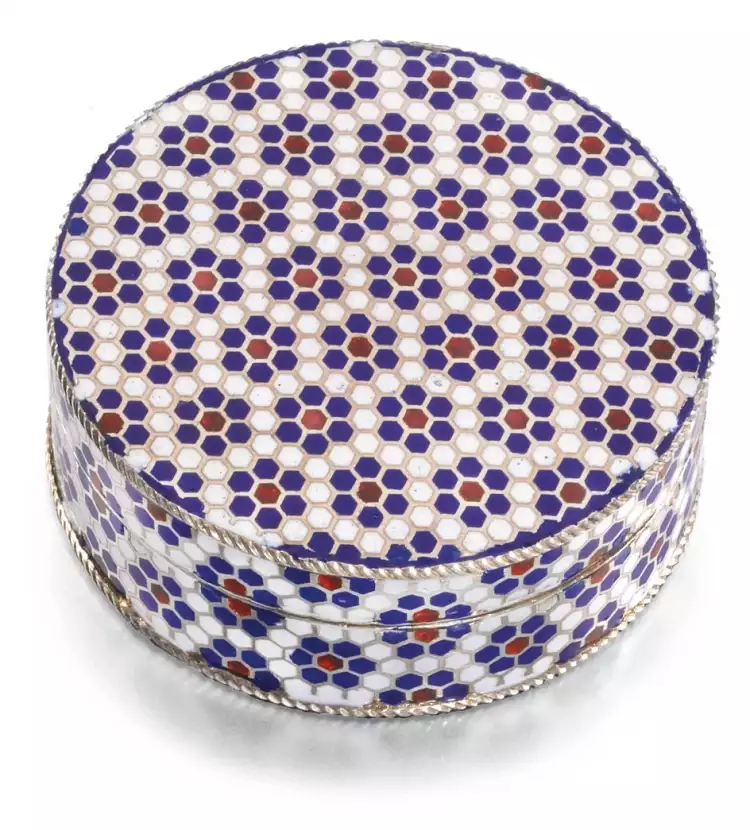 Gustav Klingert's Silver. Gilded Box with Champlevé Enamel, 1891
Gustav Klingert's Silver. Gilded Box with Champlevé Enamel, 1891
The factory also employed the popular "window" enamel technique at the turn of the century, although it did not gain widespread use due to the labor-intensive process and fragility of the partitions. Through this method, the masters created magnificent decorative ladles in the Neo-Russian style that allowed light to pass through, reminiscent of stained glass.
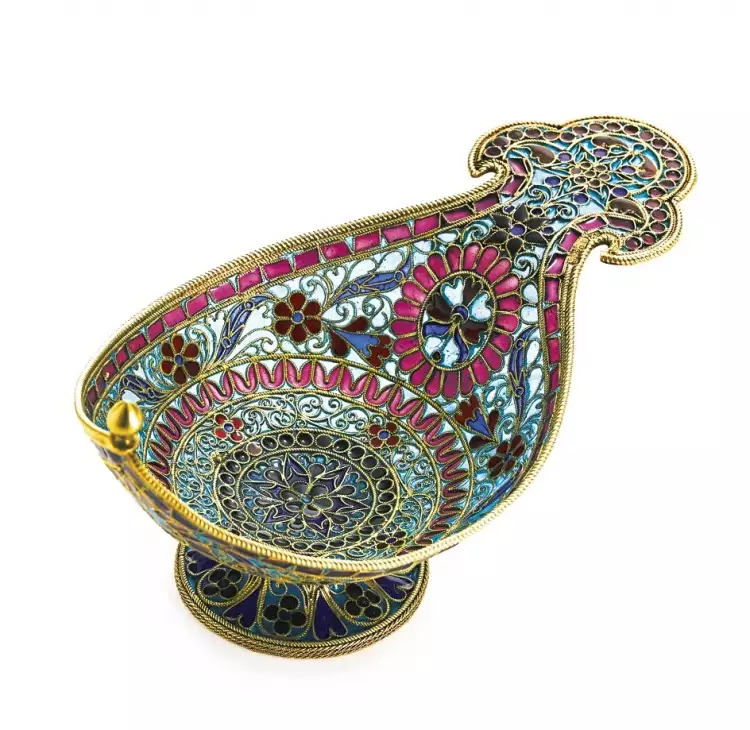 Gustav Klingert's Silver. Gilded Silver Ladle with Stained Glass Enamel, 1894
Gustav Klingert's Silver. Gilded Silver Ladle with Stained Glass Enamel, 1894
Gustav Klingert's Hallmarks
Prior to the implementation of the hallmarking regulations in 1896, finished pieces were marked with the coat of arms of Moscow and the master's mark (GK or ГК) in a rectangular shield. Occasionally, hallmarks with the owner's surname in Russian or German were used — KLINGART or KLINGERT. Additionally, the assayer applied a stamp indicating the purity of the silver and their own hallmark with initials and the year of inspection.
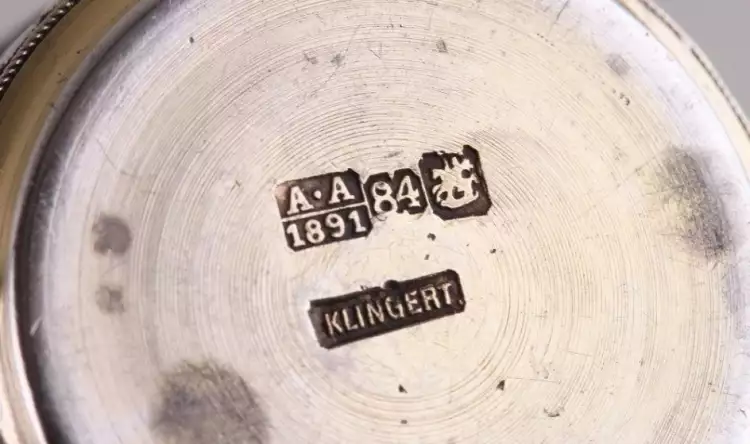 Gustav Klingert's Silver. Old Style Hallmark with the Name KLINGERT
Gustav Klingert's Silver. Old Style Hallmark with the Name KLINGERT
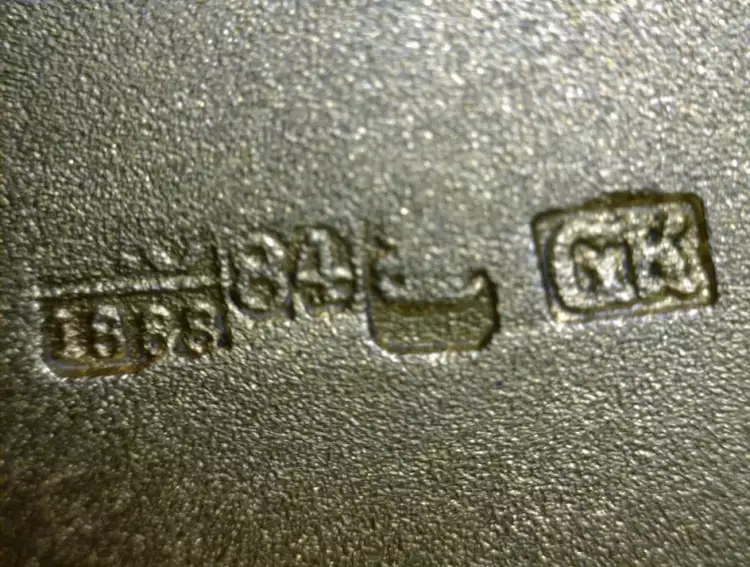 Gustav Klingert's Silver. Old Style Hallmark with the Initials GK
Gustav Klingert's Silver. Old Style Hallmark with the Initials GK
After 1899, when new hallmarking rules were enforced throughout Russia, items were marked with a stamp depicting a female profile wearing a kokoshnik (traditional headdress) and indicating the fineness and manufacturer's mark.
Gustav Klingert created an unmistakable and highly recognizable style of silverware. The master's finest creations are now held in the Armory Chamber and the State Historical Museum, and collectors are willing to pay significant sums for them. In a Christie's auction in 2013, a pair of silver candelabra by the Klingert firm reached a final price of £32,500.
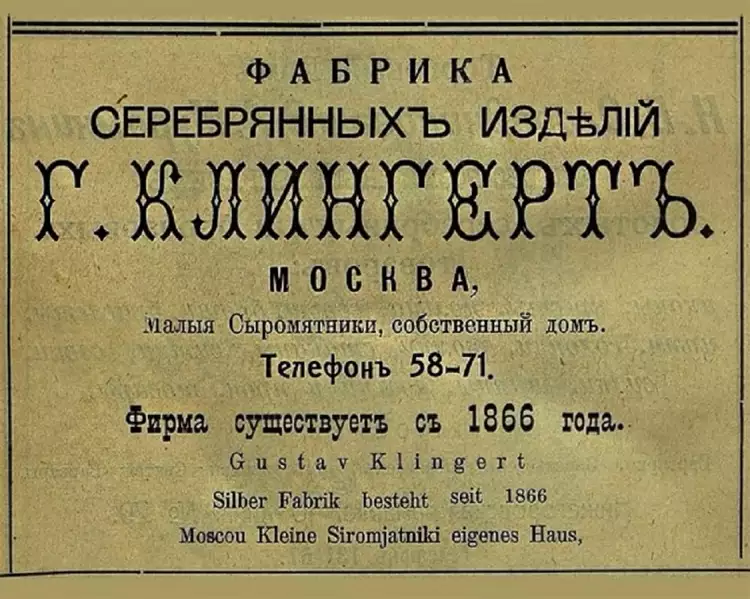
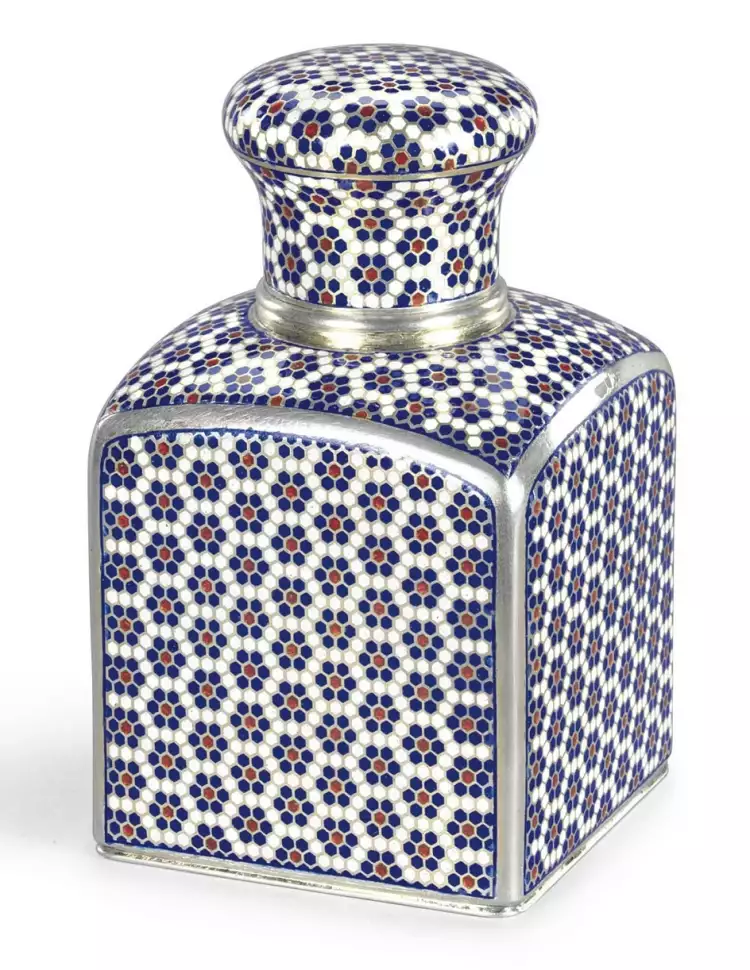
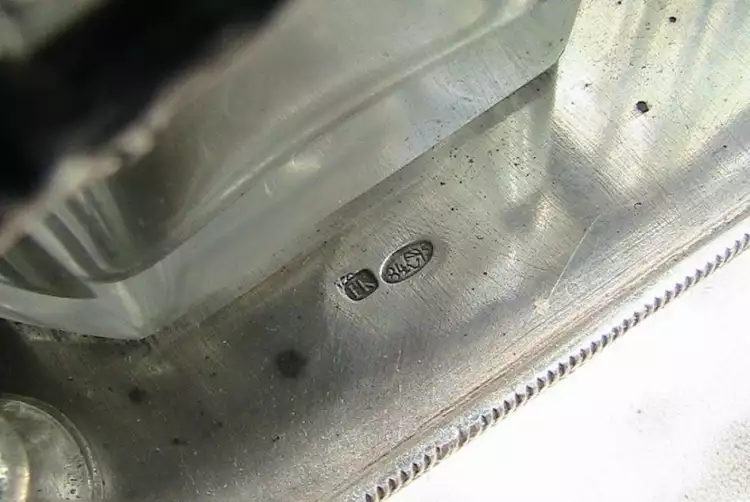
 Alberto Giacometti was a great sculptor of the 20th century who relentlessly shattered the stereotypes of art in search of creative self-expression
Alberto Giacometti was a great sculptor of the 20th century who relentlessly shattered the stereotypes of art in search of creative self-expression 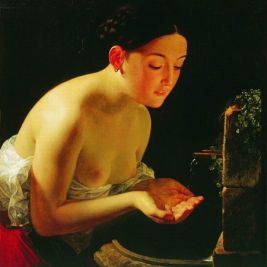 Reproduction is an accurate copy of a work of art: its essence, distinctive features, and merits
Reproduction is an accurate copy of a work of art: its essence, distinctive features, and merits  Icon - a sacred object in Christian culture: types, distinctive features, history
Icon - a sacred object in Christian culture: types, distinctive features, history 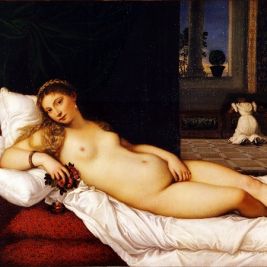 Genre of Nude in Painting: Evolution and Historical Trends of the Nude Style
Genre of Nude in Painting: Evolution and Historical Trends of the Nude Style 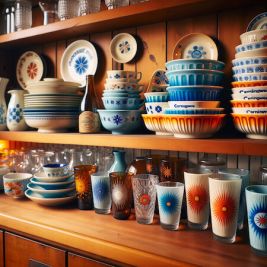 The Resurgence of Vintage Kitchen and Barware: A Collector’s Delight
The Resurgence of Vintage Kitchen and Barware: A Collector’s Delight  Top 10 Most Famous Architects - The Greatest Master Builders in Human History
Top 10 Most Famous Architects - The Greatest Master Builders in Human History 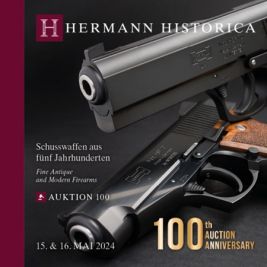 Five centuries of antique and modern firearms
Five centuries of antique and modern firearms  Sculpture is the unique art of creating three-dimensional artistic works
Sculpture is the unique art of creating three-dimensional artistic works 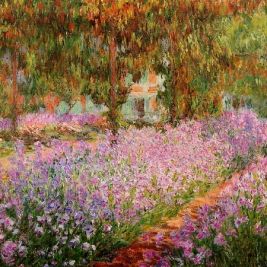 Impressionism in painting, or The Catchers of the Beautiful Moment
Impressionism in painting, or The Catchers of the Beautiful Moment  Mural - monumental urban art of immense scale
Mural - monumental urban art of immense scale